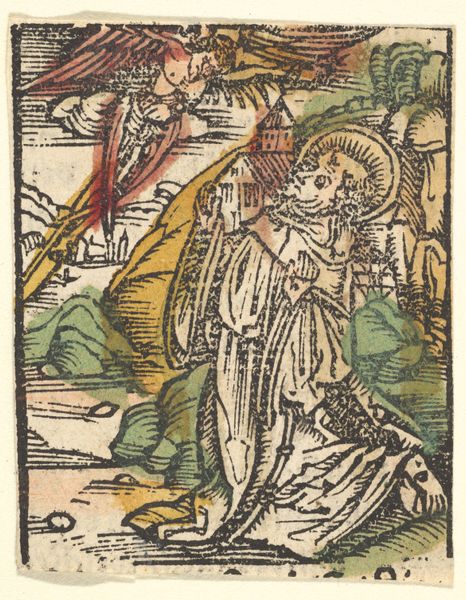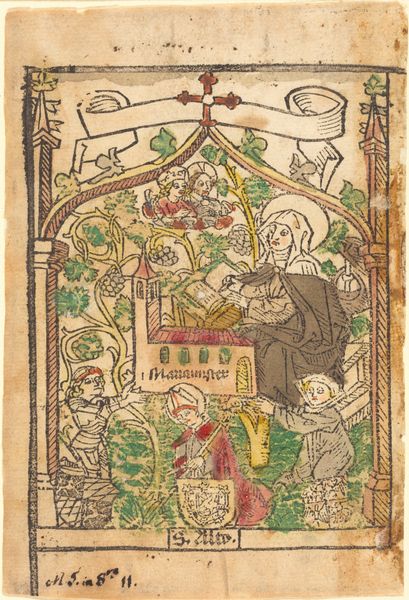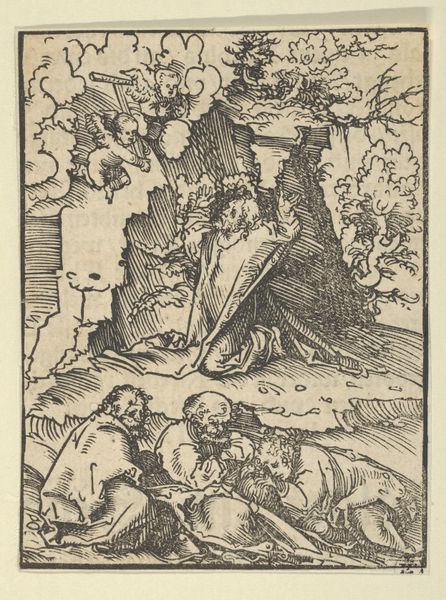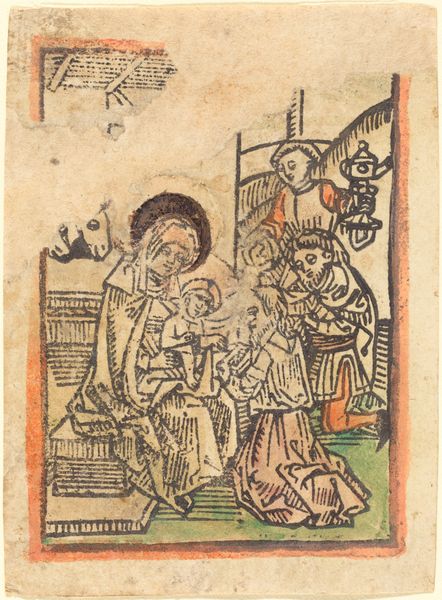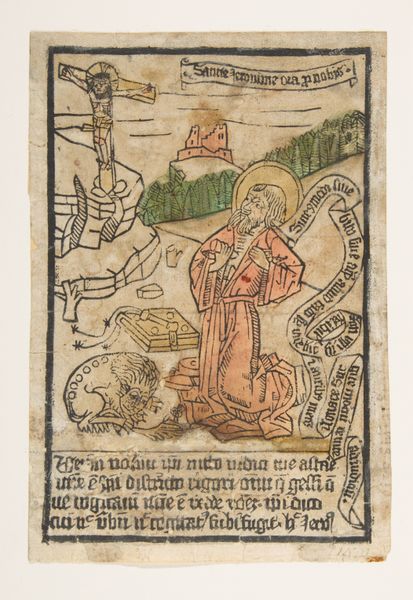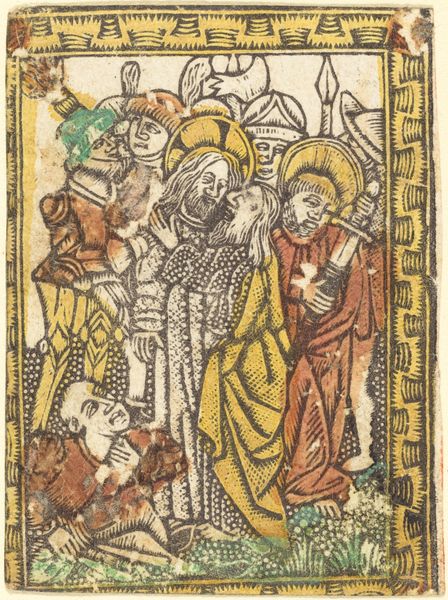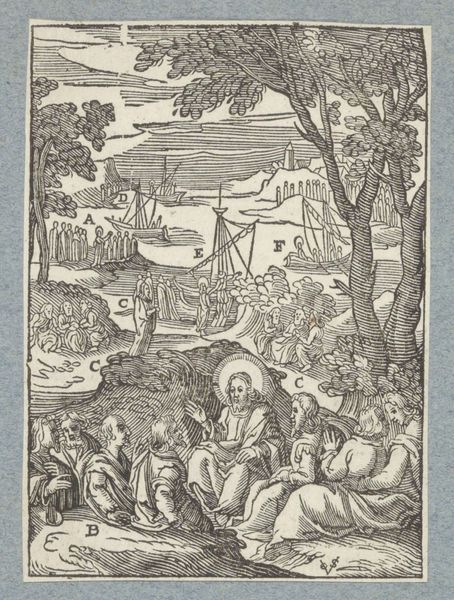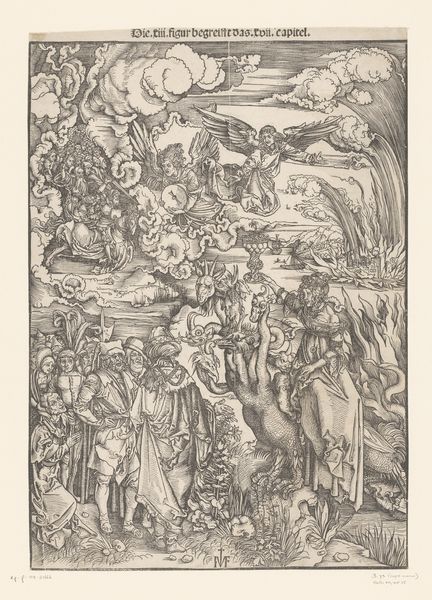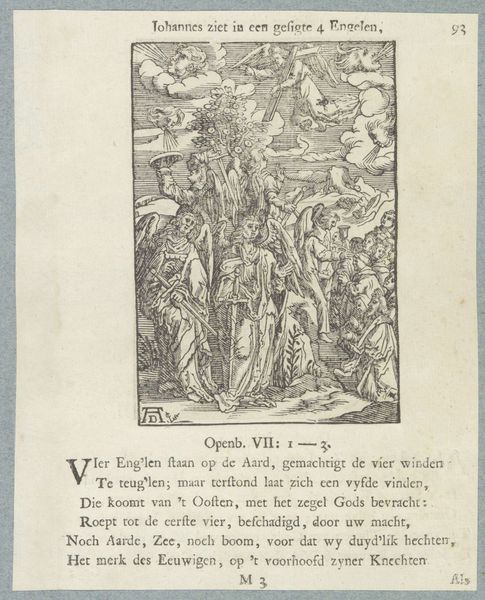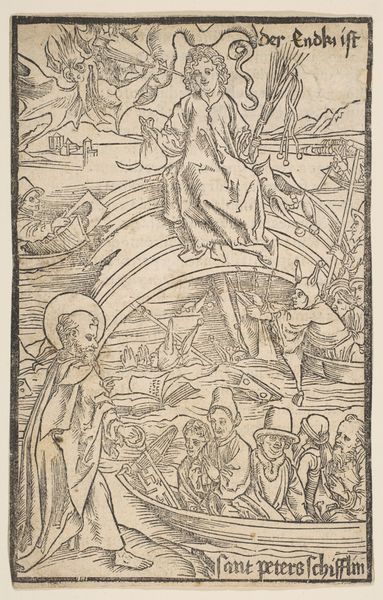
print, engraving
#
allegory
# print
#
northern-renaissance
#
engraving
Copyright: National Gallery of Art: CC0 1.0
Editor: This is the "Madonna of the Hernleberg," an engraving from 1592 by an anonymous artist. It looks like a relatively small print. I’m immediately struck by the distinct layers of the composition. What strikes you as most significant about this piece? Curator: The layered composition immediately directs the eye upwards. Observe the delicate lines creating depth, transitioning from the earthly to the divine. The material’s inherent characteristic to produce multiples accentuates this layering effect. How does this distribution of forms shape your understanding? Editor: It feels almost like the figures are arranged in different realms – the Madonna in the heavens, the petitioners on Earth. Curator: Precisely. Note the lines create the contrasts which dictate depth, shadow, and thus separate these realms. The Madonna’s static pose atop billowing clouds serves as the focal point. Editor: And how do the inscription and the figures at the bottom play into that structure? They almost seem separate, a base layer supporting everything above. Curator: In a structuralist reading, these figures establish a tension between the physical and metaphysical planes, or in semiotic terms, they introduce a symbol for mediation of sorts. What purpose might these figures serve regarding overall intention? Editor: Maybe they are essential to the overall structure because they ground the more ephemeral religious imagery in everyday life. It gives the piece context. Curator: A suitable analysis. I learned seeing it through your interpretation how a historical print incorporates several visual and textual elements for an experience that is deeply layered, reflecting a worldview from that time. Editor: Indeed. Viewing art through the lens of semiotics sheds light on its layered intentions.
Comments
No comments
Be the first to comment and join the conversation on the ultimate creative platform.
